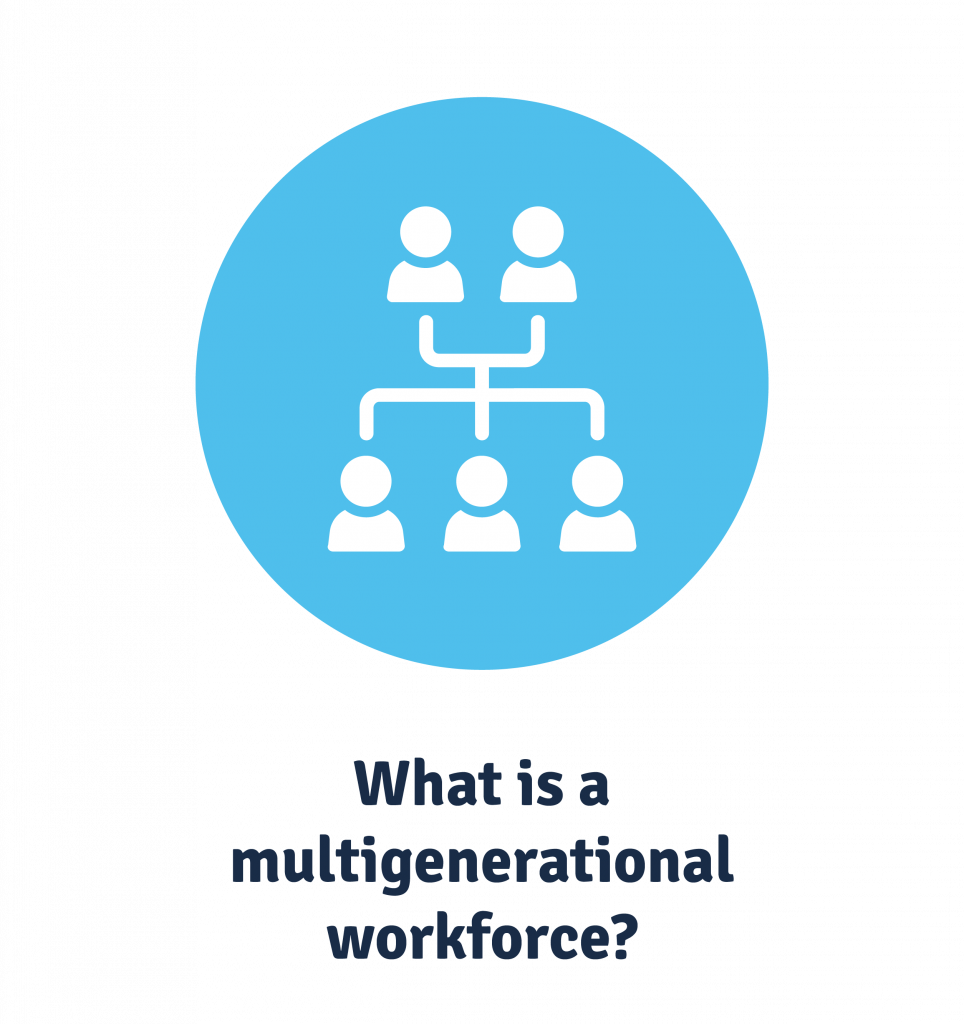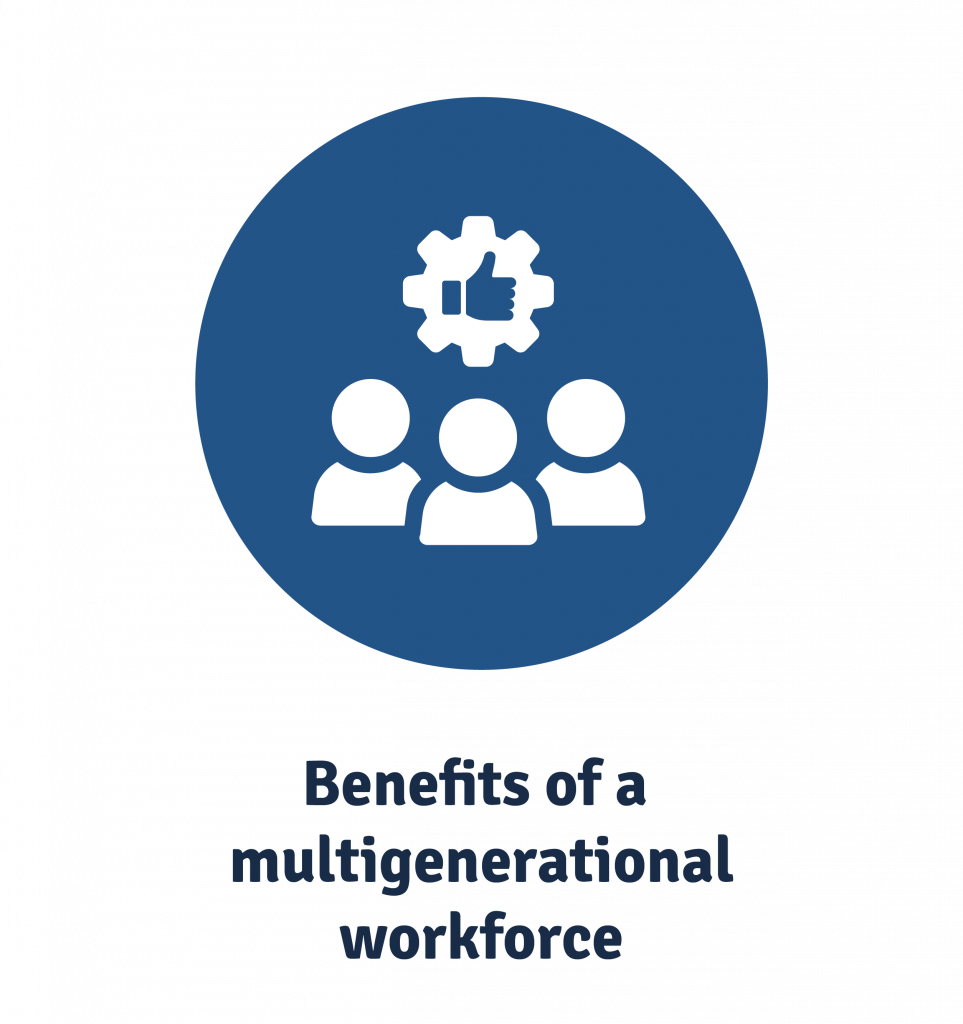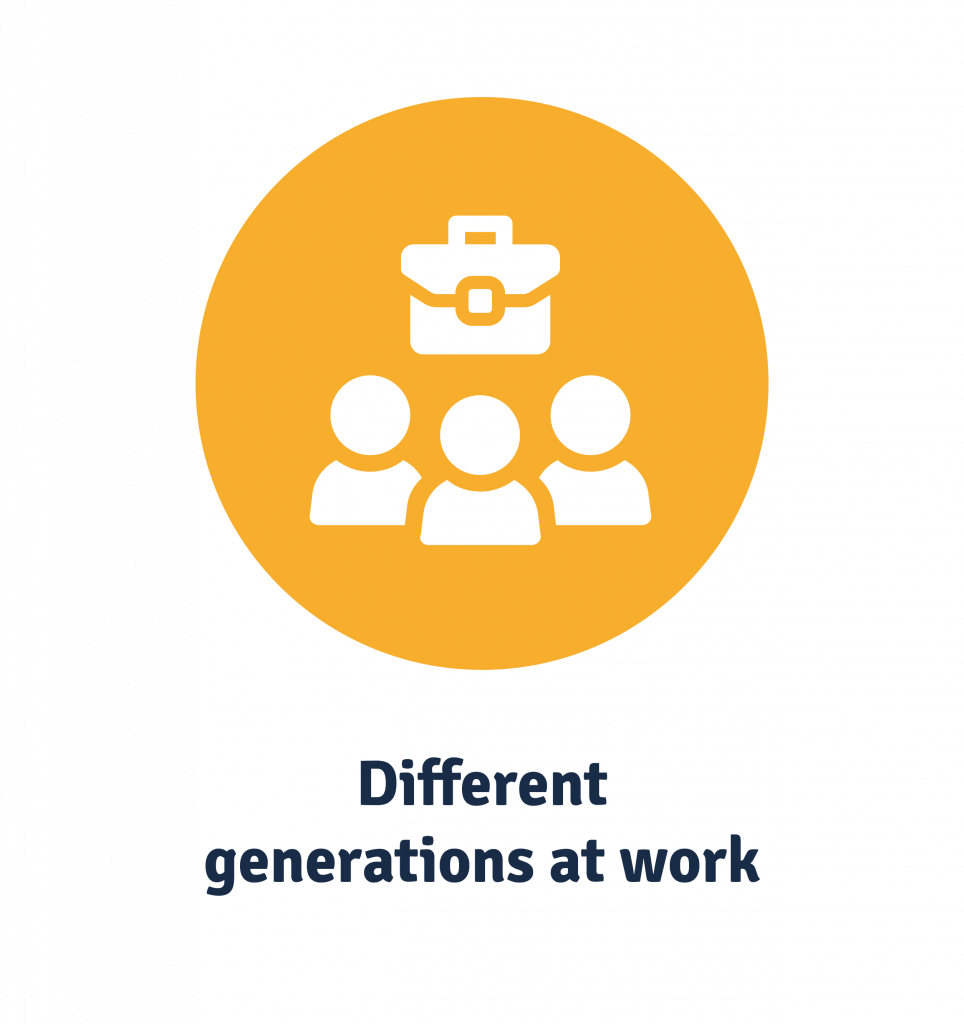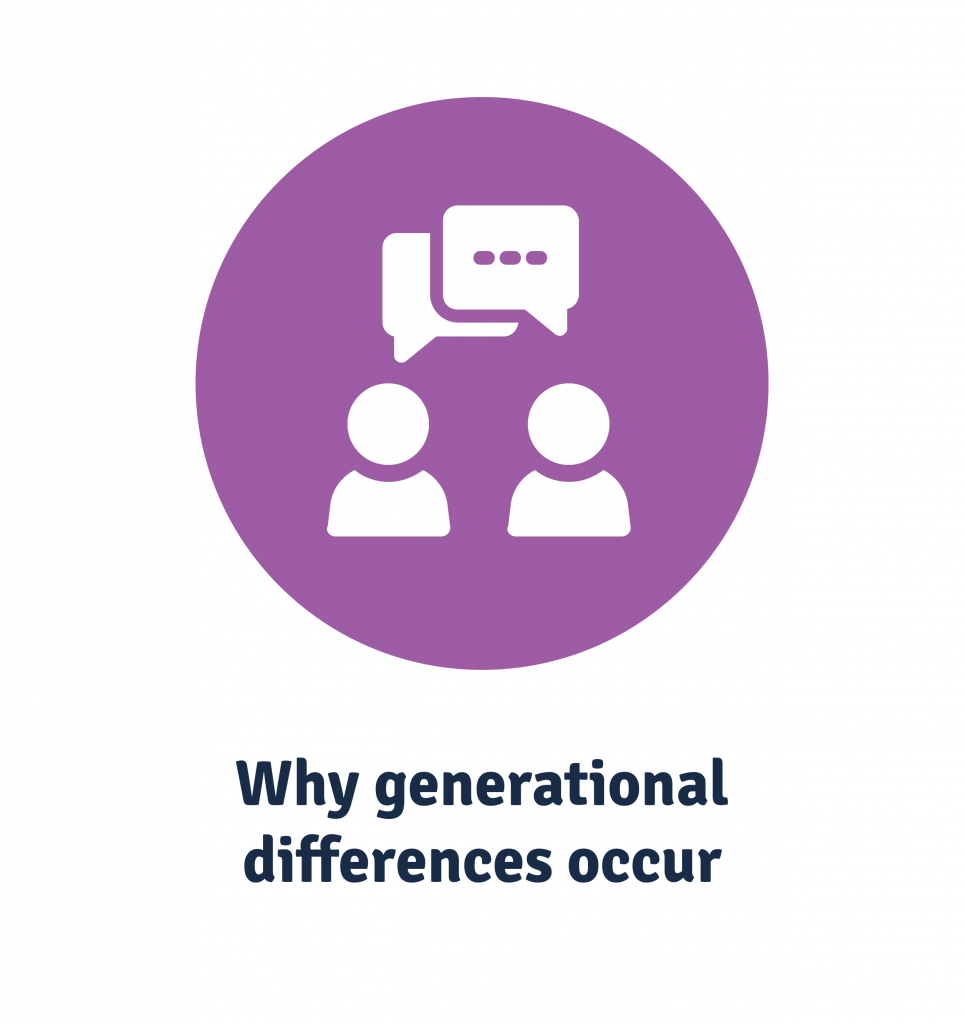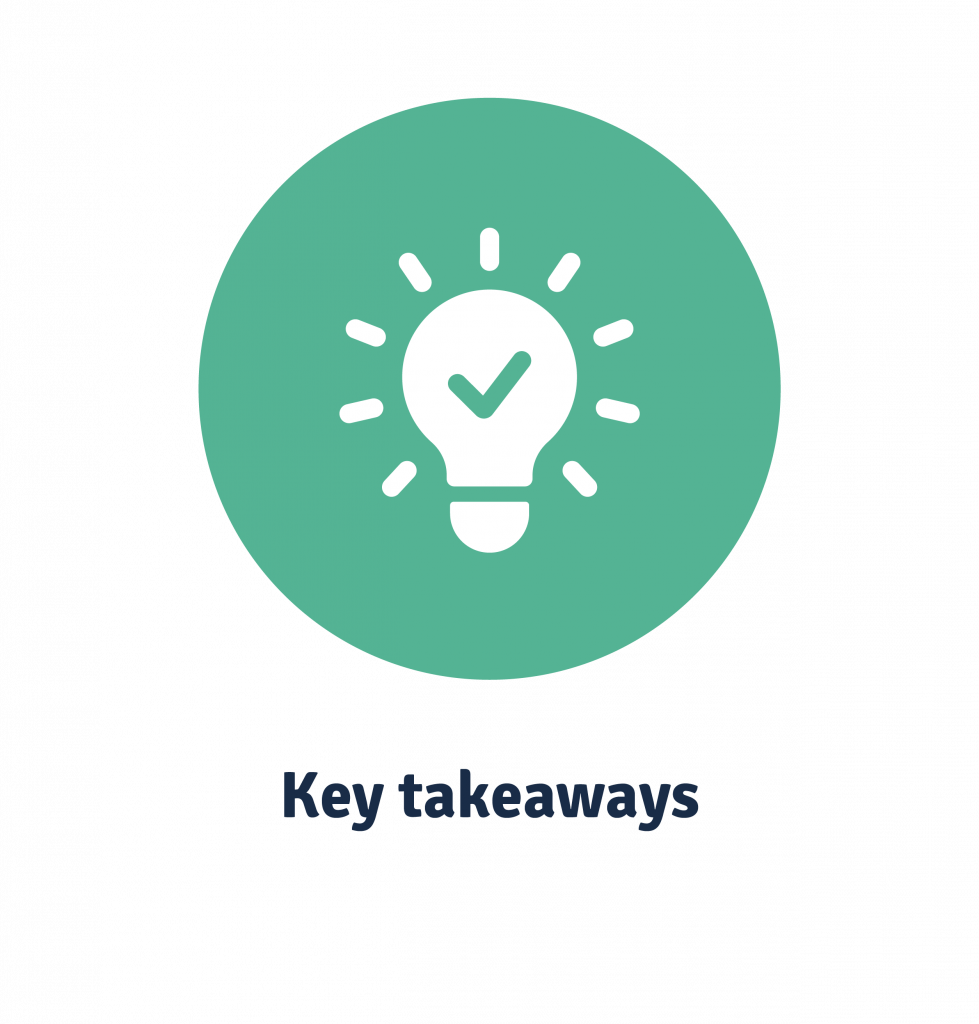Your Ultimate Guide to Managing, Engaging and Empowering a Multigenerational Workforce
The only constant is change, and the real clincher of that cliché is that it’s more true than ever in the workforce. Where Baby Boomers once ruled the roost, Millennials and Gen Z will soon dominate the working world. The multigenerational workforce has risen.
But what works for a generation driven by financial stability will differ starkly from younger generations who believe their employer should be offering as much for them as they can offer their employer. How can one design engagement and management strategies around such different credos?
Not to worry. This is your ultimate guide to understanding and engaging each generation utilising their different needs and priorities.
What is a multigenerational workforce?
A multigenerational workforce describes a workplace comprised of employees from several different generations. As the average retirement age increases, there’s a chance that many organisations could have every generation converging at one time, meaning up there could potentially be a gap of five decades between oldest and youngest employees.
This brings up the potential issue of conflicting experiences with, attitudes towards and priorities at work. Baby Boomers entered a decidedly different job market than their adolescent counterpart, Gen Z. Even Millennials and Generation X will have different experiences when it comes to technology, skills and work style—as well as different mindsets.
Leading a multigenerational workforce
All generations have evolved with the times, right? Well, yes. And career progression is not intrinsically tied to age anymore? Inarguably true. But while evidence has shown there’s a relatively small difference in generational preferences, values and needs in the workplace, it’s less about stereotyping based on generations and more about understanding how employees of all ages approach their work.
Consider that:
- Millennials are notorious for job hopping (staying in a job less than two years), but often it’s because they’re not being given the opportunities to learn and grow that they crave.
- 37% of Gen X believe work-life balance is the most important factor in choosing a job (after pay), because the work-life balance phenomenon developed during formative years spent watching their Baby Boomer parents and Silent Generation grandparents sacrificing family time to work.
- The shift in dynamic from strictly older management and young subordinates means it’s now entirely possible a 25-year-old manager could be leading a team of 30, 40 and 50-year-olds. How does one navigate any age-related bias in workplace culture?
So, while there’s no fundamental reason to treat your employees differently, there are certainly environmental factors that have defined how each generation approaches their jobs—which is why you need to be aware of the generational differences in your workforce.
Benefits of a multigenerational workforce
Age diversity has many advantages in the workplace.
- A continuous talent pipeline. Sure, your Boomers know a lot. But what happens when they retire? Having multiple generations in your workforce means you have a larger pool for succession planning.
- Mentoring in the name of succession planning also helps foster mutual respect between your tenured employees and younger workers. Best practices are shared amongst different perspectives, too.
- Mission-critical knowledge is less likely to go extinct as it is passed between employees at different career stages.
- Multi-skilled teams are easier to create, particularly if you’ve some kind of skills register from which to build them.
Combined, this offers your business greater economic resilience and competitive advantage while employees experience both professional and personal development. We’d say that’s a win-win situation.
Different generations in the workplace
People at different stages in their lives have different priorities. Broadly speaking, an employee in their 50s will have different concerns, responsibilities, goals and even dependents to those in their 20s. All of this informs the positions they hold, the organisations they work for, and their work style.
Baby Boomers
Born between 1946 and 1964, Baby Boomers are the generation you’re least likely to have amongst even a multigenerational workforce. However, not all Boomers will retire at the expected age of 65; rather, some will keep working out of joy and others may not be able to retire at a ‘traditional’ age. This means that while they make up a small slice in your pie, they’re still likely to hang around longer than other generations.
Baby Boomers as employees
Average time spent in job: 15 years
Driven by: Financial stability
Strength: Depth of experience
Generation X
Generation X hark from the period between 1965–1979. They’re like the middle child of the family; often overlooked while older (Boomers) and younger (Millennials) siblings share the limelight (for good or bad).
They’re highly adaptable and experienced, yet some of the most overlooked for promotions. And whilst they were once called the slacker generation, Gen X are most likely to have dependants both younger and older than them.
Generation X as employees
Average time spent in job: 5 years
Driven by: Work-life balance
Strength: Adaptable leadership
Millennials
Ah, the much derided millennial generation. As of 2017, they’re the largest generation in the labour force and the group that’s experienced the starkest shift in career priorities.
For Millennials, fun perks and quick promotions are a nice-to-have but job satisfaction, stability and opportunities to learn are non-negotiable. The marry and have children later, staying in tertiary education longer. The oldest Millennials are in their early 40s while the youngest are still 20-somethings, so they possess diverse priorities even within their own age group.
Millennials as employees
Average time spent in job: 2 years
Driven by: Career growth, purpose
Strength: Most collaborative
Generation Z
The newest entrants to the workforce, the eldest of Generation Z were born in 1997. (Yes, really.) Much like Millennials, Gen Z are interested in career and leadership development and want to see their work contribute to a larger objective. They’re multicultural, tech native and all about employers exhibiting the same diversity and inclusivity they champion themselves—which explains why Gen Z are more attracted to jobs that interest them than those that pay well.
Generation Z as employees
Average time spent in job: TBD
Driven by: Entrepreneurism, global citizenship
Strength: Tech savvy.
How generational differences manifest in the workplace
There are a number of ways these backgrounds affect communication and working styles, motivations, expectations and mindsets, including:
- Desired company culture, perks and benefits
- Approach to conflict resolution
- Teamwork vs autonomy
- Sense of company loyalty
- Responsibility to individual and society
- The symbiotic or dynamic relationship between work and life.
How generations view each concept is determined by the trends they grew up with. Western organisations particularly may find the mindsets of their employees are informed by the social and political issues that surround them (such as a Gen Z employee desiring an employer who advocates for social issues and contributes to charities). They may even be increasing interest in financial investment programs beyond their retirement fund. These differences become even more complex when you consider interactions between intergenerational colleagues.
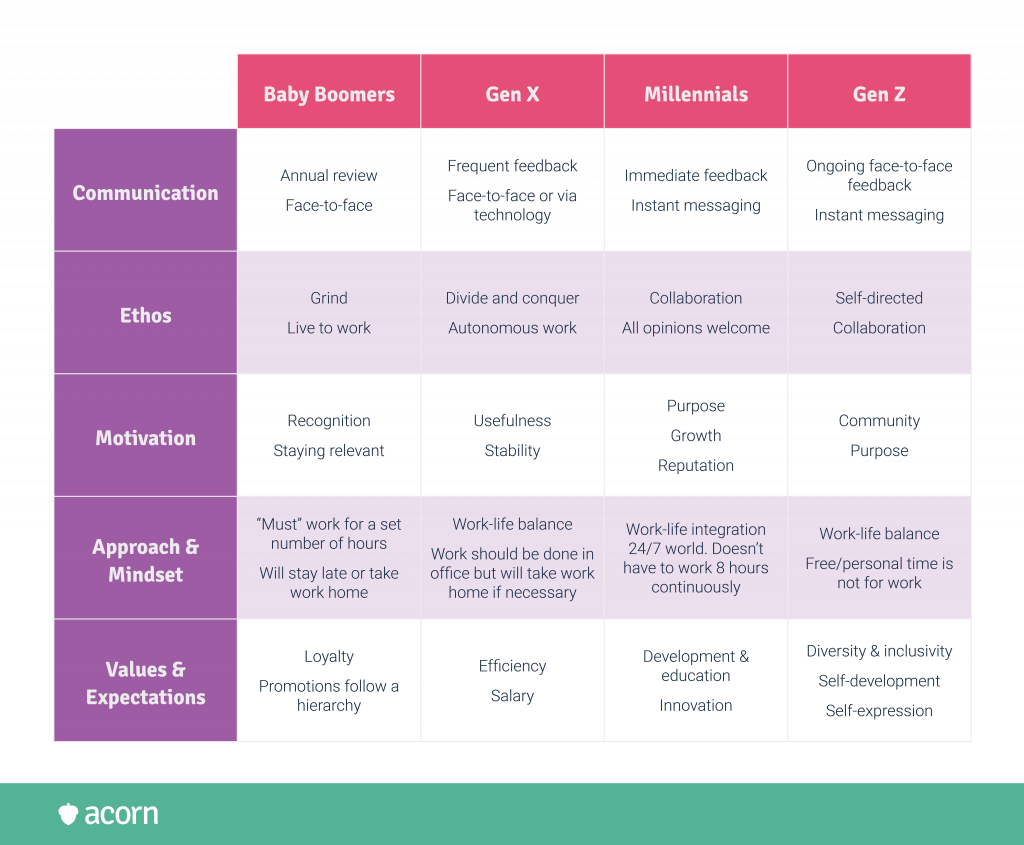
Tips for managing a multigenerational workforce
Take ‘generation’ out of the equation and you’re left with a diverse workforce with varying needs. Understanding those various needs can help you better lead and manage, because ultimately, it comes down to management.
Managing a multigenerational workforce is a flow-on effect:
- An organisation is only as strong as its foundation, and that foundation relies on empowered, productive and efficient teams.
- Empowered, productive and efficient teams must have coworkers who respect and turn to one another for advice and a collaboration.
- Respectful employees need managers who understand their individual needs across various life stages.
Those with children may prefer a flexible work schedule over professional development in the present. Conversely, younger generations tend to enter the workforce straight from study and looking for a job that will kick off an illustrious career. Trust starts and ends with your managers, who set the tone for inclusion and empowerment. A high-trust environment cuts negativity off before it festers, focuses on learning opportunities over fault and gives employees space to relate meaningfully to one another.
Turning generational challenges into opportunities
Millennials are entitled. Gen X are self-serving. Gen Z can’t get off their phones, and Boomers can’t even turn their phone on. Age bias can easily distort employees’ view of one another. Differences in communication styles, values, life experience and even work habits or ‘traditions’ can intersect amongst teams, and lead to toxic dynamics without inclusive management.
The key to creating and managing cohesive multigenerational teams? Turning perceived differences into common ground.
Challenge: Contrasting values
A clear split in workplace values is the “work to live” and “live to work” mentality. Drive and ambition can be blurred lines across age groups.
It’s no lie older generations consider their relationship with and standing in an organisation to be highly important. Younger entrants to the workforce often place value on what their employer can offer them instead, valuing opportunity, education and growth.
Opportunity: Shared goals
Common goals should be the driver for all employees, no matter the reason they come to work. Unifying the purpose for their work will bridge the divide and strengthen discourse around it, creating shared experiences. How?
- Goals give a clear focus and helps participants stay accountable and on track.
- Goals set a timeline, measuring progress against outcomes.
- Goal-setting is directly related to better performance, which itself leads to increased job satisfaction.
It’s also important to consider the benefits that can bolster those experiences. Flexible hours might give younger employees more motivation to be loyal to your organisation, while you can still create clear career trajectories for older employees through learning and development initiatives and vice versa.
Challenge: Communication styles
Different age cohorts have different feedback preferences; some like face-to-face conversations while others favour written responses. Millennials, as an example, often prefer a constant feedback loop over an annual review. And if you toss in the informal language and abbreviations younger gens love, then you can see how easily miscommunications can happen in the workplace.
Opportunity: Inclusive leaders
Change starts at the top. Good leaders adapt to needs of the employee. If they prefer text, email or message them via the internal messaging system. If they like to chat about ideas, get coffee with them one morning. Regular feedback in a variety of mediums can also encourage co-workers to affirm it amongst themselves, inviting more open dialogue about work strengths and performance.
It helps to encourage conversation outside of project parameters, too. Gens Y and Z especially value deep relationships with co-workers over superficial professional connections. Informal team-building activities like Friday lunches can take the pressure off communication (and as a benefit, happy relationships between coworkers are directly related to their sense of company loyalty).
Challenge: Clashing approaches
Most people like to work with others of a similar age because they find comfort in a shared mindset.
- You may see problems with “less-experienced” younger employees in leadership positions over older staff.
- Though not a strictly generational phenomenon, autonomy is something Gen X stereotypically desires.
- Millennials may look to leaders for guidance more than other generations. In a team dynamic, those who prefer to work alone may inadvertently cause friction, which could ultimately affect morale and output.
Opportunity: Knowledge sharing
The shift here is from a focus on hierarchies to partnership. It works for everyone: older generations have a wealth of experience and knowledge to bring to the table, while the youngest often engage best through discussion and collaboration. People learn more from one another than formal training, so it can help to create opportunities for reciprocal cross-generational mentoring.
Millennials can then safely look to Gen X for guidance, avoiding the competition that can arise from seeking the same advice from their peers, while the more experienced employee can see projects through fresh eyes.
Key takeaways
The workforce has changed significantly since the Silent Generation experienced a baby boom. While generational diversity brings the threat of age bias, managers can take this opportunity to turn challenges into learning experiences.
Understanding differences in styles of work and communication, career goals and personal priorities will help managers adapt to the different needs of their team. Creating shared goals and encouraging more frequent and diverse exchanges of knowledge are key ways to manage multigenerational workforces.
Related Reads on This Topic

7 Strategies to Engage Your Managers
You’re likely already doing some of these informally. Make these strategies gospel for engaged managers.

Is Talent or Performance Management More Important?
Two sides of the same coin, but with different outcomes and different strategies to implement them.

Building Mission-Critical Knowledge in the Workplace
You have to give your employees the tools and mentors they need to drive business success.
